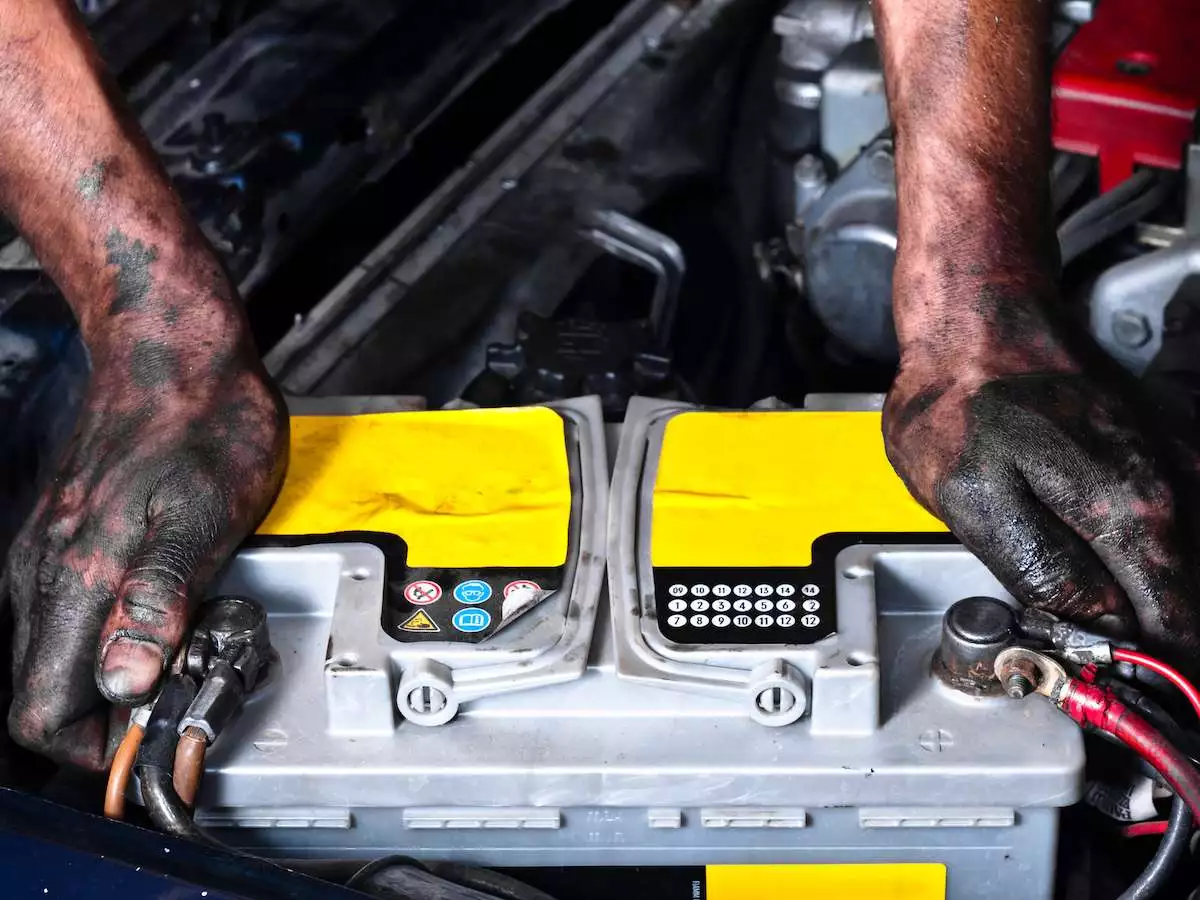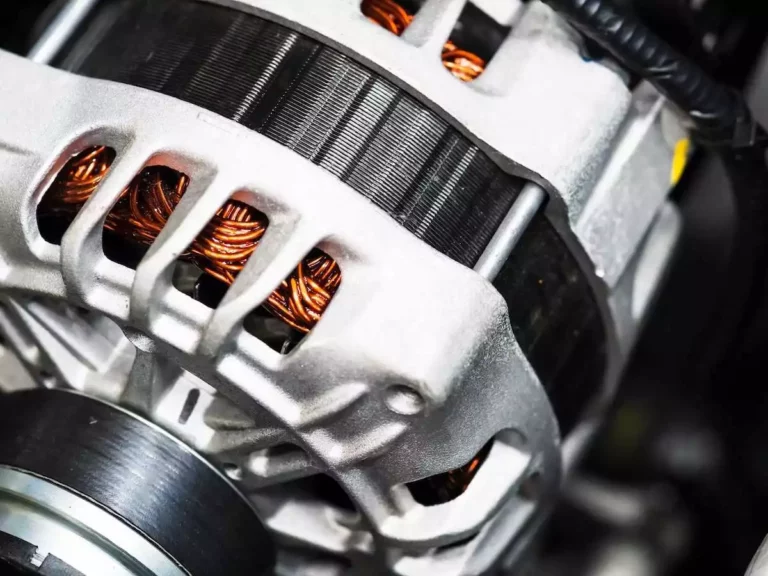How Many Amps is a Car Battery? [Complete Guide!]
A car battery is a vital component that supplies the power needed to start the vehicle and run its electrical system. A basic understanding of the different information on the car battery will ensure that you purchase the correct one. So let’s start with how many Amps are in a car battery.
A Standard 12-Volt car battery will have an Amp-hour rating of 48Ah. A car battery will have a Cold Cranking Amp rating. This is the maximum number of Amps that the specific 12-volt car battery can supply for a maximum period of 30 seconds at 0°F. The Cold Crank Amps figure range from 400 to 1500.
Read on to discover how many Amps, the different types of Amp measurements, the fastest charging methods, and how long each charge will take on a car battery.
The Different Types Of Amps Found On A Car Battery
There are different types of Amps displayed on a car battery. These are the Amp-hours, Cold-Crank-Amps, and the Reserve Capacity. But, before we can discuss the different types, we first need to understand what an “Amp” is.
An Amperes is the measure of constant electrical current produced from the battery. An easy way to understand what an Amp is will be to imagine electricity as water in a garden hose. The water flowing through the pipe is the current.
So, the “Ampere” basically indicates the amount of current that will flow from the car battery to other electrical equipment.
Now that there is a basic understanding of what an Amp is, let’s find out how many Amps are in a car battery.
What Is The Amp Measurement On A Car Battery
A standard 12-volt car battery will have an Amperage (Amp) rating measured in Amp Hours (Ah). This reading will depict how long the battery will last without charging. Most 12 Volt car batteries will have a 48 Ah rating, so let’s break it down with an example.
A 48 Amp hour battery that supplies a 2 Amp circuit will have sufficient power for 24 hours.
- 48Ah ÷ 2A = 24 hours
The more Amps the battery is supplying, the quicker the battery will drain, as displayed in the table below:
| Battery Amp Hour Rating | Amps Used | Duration |
| 48Ah | 4A | 12 hours |
| 48Ah | 6A | 8 hours |
| 48Ah | 10A | 4.8 hours |
| 48Ah | 12A | 4 hours |
| 48Ah | 16A | 3 hours |
| 48Ah | 24A | 2 hours |
The number of amps a battery supplies will depend on the number of electrical pieces of equipment that are consuming the current from the battery and their power consumption, respectively.
How to determine the total amps consumed by your car equipment, however, is a topic for another article.
The Cold Cranking Amps (CCA) Of A Car Battery
Another common reading found on a car battery and arguably the more important one is the Cold Crank Amps (CCA). The CCA should not be confused with the Reserve Capacity (RC) reading.
The CCA is the maximum amount of Amps that a 12-volt car battery can supply for a maximum period of 30 seconds at 0°F. The reason this reading is important is so that the starter in the engine can have sufficient power to spin and start the engine. In colder conditions, the starter must work harder to start the engine due to friction, thus requiring more Amps from the battery.
The Cold Cranking Amps (CCA) can vary depending on the battery’s make and intended purpose. In most modern cars, the batteries CCA will be 400; this figure will increase to 800 for SUVs and 1500 for trucks. In areas with extended severe cold weather, the CCA is usually increased as most standard batteries will not last.
The Reserve Capacity (RC) Of A Car Battery
Unlike the Amp hours (Ah) and Cold Cranking Amps (CCA) that are measured in Amps, the Reserve Capacity (RC) of a battery is measured in minutes. This may sound a little mundane, but is it a good indicator to look for when deciding on a new car battery?
The battery Reserve Capacity (RC) measures how long the battery can discharge at a rate of 25 Amps. The RC reading is measured at an operational temperature of 80°F to have the most accurate reading. If the RC figure on the battery is 180, this results in the battery supplying 25 Amps for a period of 180 minutes (3 hours).
After the battery has supplied 25 Amps for 180 minutes, it will not have enough amps in reserve to start the engine and must be charged. Any further draining of the battery may cause damage to the battery, preventing it from holding its charge.
What Size Charger Can Be Used On A Car Battery
There are two methods of charging a 12 Volt car battery. The first is with a battery charger like this one (on Amazon), and the second is with the car’s engine. Both these methods will charge the car battery, but using a battery charger will take longer due to the charger’s Amp output.
Battery chargers come in a variety of different Amp ratings from 2A to 25 A. The higher the Amp rating, the quicker it will charge the battery. If we use a standard 48Ah car battery and connect it to a 2 Amp battery charger, it will take 24 hours to charge fully. This time can be halved if a 4 Amp battery charger is used and so on.
Using a battery charger with an Amp rating of 10 Amps or higher may charge the battery in less than four hours, but it will increase the chances of overcharging and damaging the battery. When using a high output charger, it is essential to monitor the battery during the charging process.
When an alternator is charging the battery in the car’s engine, it can charge the battery at a rate of 40 Amps, and in larger truck engines, up to 300Amps. This method can charge a dead car battery in a little over an hour. The charging circuit on a car makes use of a regulator that will prevent the battery from overcharging.
How Long Does A Car Battery Take To Charge After Using CCA

When starting a car’s engine, the battery will use the Cold Cranking Amps to supply power to the starter motor. As the vehicle’s engine runs, the alternator will commence replenishing the lost Amps in the battery. So let’s work out how many amps have been used to start the engine and how long it will take to charge fully while driving.
If the car battery supplies 800 CCA to the starter motor and it spins for 10 seconds before the engine starts running. This is equivalent to 2.2 Amp Hours or 8000 amp seconds. If the alternator can output 80 Amps to charge the battery, it will replenish the battery fully in 99 seconds (1m39s).



![Do Manual Cars Have Cruise Control? [Full Guide!]](https://vehicleuniversity.com/wp-content/uploads/2023/01/cruise-control-unit-in-the-new-car-close-2021-08-28-19-59-46-utc-768x572.webp)
![Can You Open a Car Door Underwater? [Here’s What to Know!]](https://vehicleuniversity.com/wp-content/uploads/2023/01/Depositphotos_52375185_XL-768x512.jpeg)
![Car AC Hot When Idle? [Why Does It Happen & How to Fix!]](https://vehicleuniversity.com/wp-content/uploads/2023/01/dials-on-a-car-dash-2021-08-30-07-52-07-utc-768x512.webp)
![Car AC Takes A While To Get Cold? [Here’s Why & What To Do!]](https://vehicleuniversity.com/wp-content/uploads/2023/01/girl-driver-has-problem-with-non-working-condition-2022-11-15-04-07-21-utc-768x512.jpeg)
![Car AC Compressor Turns On And Off? [Meaning & Reasons!]](https://vehicleuniversity.com/wp-content/uploads/2023/01/ac-ventilation-deck-2021-08-26-17-12-30-utc-1-768x510.webp)